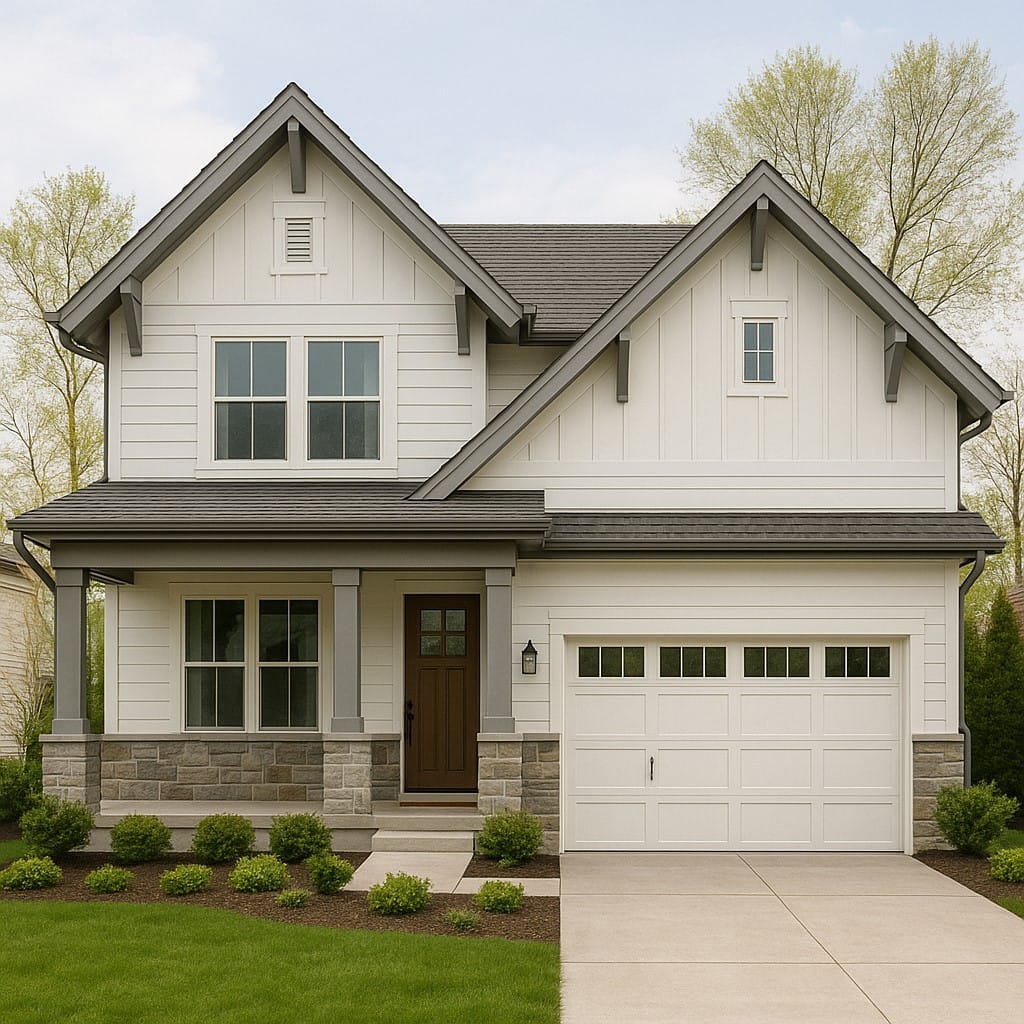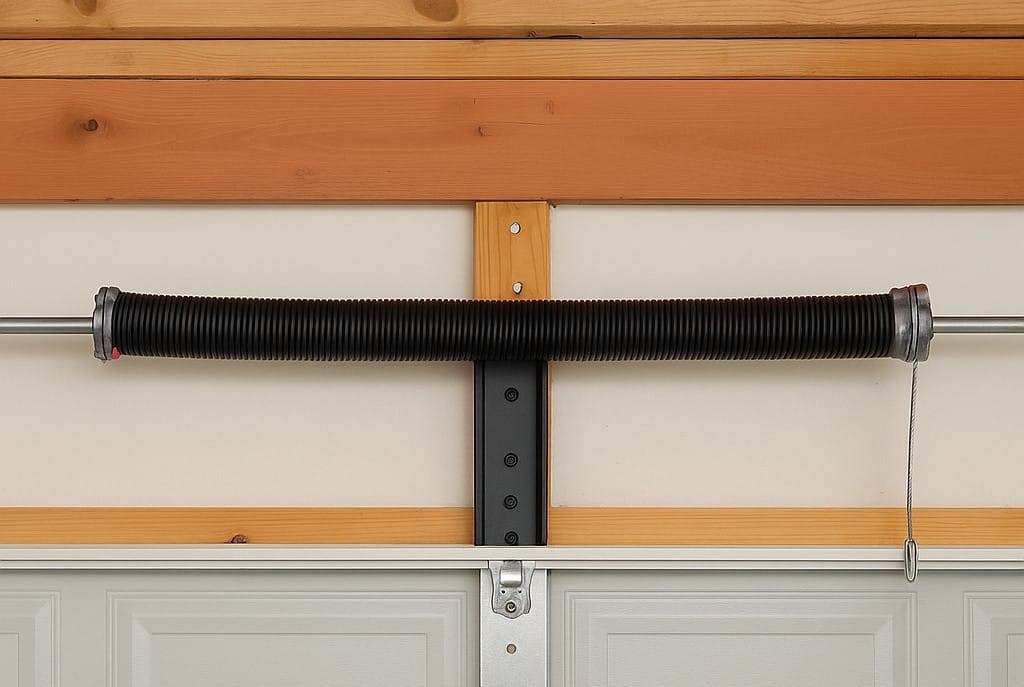How Residential Garage Door Installation in Texas Can Improve Accessibility at Home

By Memorial Garage Door Center | 1312 Utah St, Houston, TX 77007 | (281) 720-3113
When Mr. Thompson, a retired firefighter in Houston, started experiencing joint pain, the once simple act of opening his old garage door became a major inconvenience. The heavy steel door, worn vertical tracks, and unreliable opener created a daily struggle just to access his car. After contacting Memorial Garage Door Center, our team provided a complete residential garage door installation with an insulated door, new torsion springs, a smart opener, and safety sensors. Now, Mr. Thompson enjoys smooth, quiet, and secure garage access, proving how the right garage door system can dramatically enhance home accessibility.
Across Texas, over 27% of adults report living with some form of disability, ranging from limited mobility to sensory impairments. Yet many homes still have outdated garage doors with poor insulation, rusted brackets, and broken panels that make safe access difficult. For seniors, people with disabilities, and busy families, a professionally installed garage door can be the key to maintaining independence and convenience.
That’s why investing in a residential garage door installation isn’t just about curb appeal or security, it’s about creating a safe, accessible, and user-friendly environment at home. With the right system, you can eliminate physical barriers, improve energy efficiency, and enjoy seamless garage door operation for years to come.
Why Accessibility at Home Starts with Your Garage

The garage door is often the most-used entrance to a home, especially in Texas, where attached garages are common. However, older garage doors, often with outdated torsion tubes, bent hinges, and misaligned horizontal tracks, can be physically demanding and even dangerous.
A properly designed and installed residential garage door system includes various safety and convenience components like automatic openers, insulated panels, properly tensioned springs, and safety sensors that work together to provide smooth operation and reliable access.
For someone using a wheelchair, walker, or scooter, a narrow garage door opening with a worn-down bottom panel can be more than an inconvenience; it can be a safety hazard. Accessibility starts with proper planning, accurate installation instructions, and the use of high-quality parts such as zinc hex lag screws, center brackets, and strong vertical track systems.
The Complete Installation Process: Step-by-Step for Accessibility
1. Garage Door Removal and Preparation
The installation process begins with removing the old door. Technicians disconnect the garage door opener, release the spring tension using a winding bar and vise grip, and disassemble the torsion springs, cables, drums, and brackets. This ensures a safe work area for the new system.
The garage opening is then measured precisely for the correct fit. This includes verifying the ceiling clearance, wall studs for mounting brackets, and ensuring the garage door opening can accommodate any desired accessibility enhancements.
2. Installing the Bottom Panel and Vertical Tracks
Installation begins with setting the bottom panel into place, followed by securing it using appropriate hinges and flag brackets. The vertical tracks are aligned carefully on both sides, ensuring that the rollers glide freely for smooth and quiet operation.
Each garage door section is installed one at a time, with panels aligned to prevent misfitting. These garage door sections typically include insulation materials rated by R-value to increase energy efficiency, especially important in the Texas heat.
3. Torsion Spring System and Center Bracket Installation

Once all garage door panels are stacked, the torsion tube, torsion springs, and center bracket are mounted above the door. This is where correct spring tension is vital. If the spring tension is too high or too low, the door may not open properly, posing safety risks.
Our experienced team at Memorial Garage Door Center ensures all brackets, cones, drums, and cables are installed with precision using necessary tools like socket wrenches and impact drivers.
4. Garage Door Opener and Safety Sensors
Next comes the installation of the garage door opener, mounted to the ceiling with heavy-duty angle iron brackets. For accessible homes, we recommend smart openers that allow control from a smartphone app, voice assistant, or wireless keypad. These make the garage door system more convenient for anyone, especially those with limited mobility.
Safety sensors are installed near the ground on each side of the opening. These devices prevent the door from closing if an object, pet, or person is in its path, an essential feature for safe operation.
5. Final Checks and Calibration
After the complete setup, we perform a series of operations and safety tests. The door is opened and closed multiple times to ensure smooth operation, correct balance, and proper function of all moving parts. We also check the insulation seal along the bottom panel to ensure a snug fit that reduces air infiltration.
Top Features That Boost Accessibility
✅ Smart Openers & Wireless Access
Today’s residential garage doors offer smart technology integration. Openers can connect to apps like myQ or Google Home, allowing users to open or monitor their door remotely. You can even receive notifications if the garage is left open, providing peace of mind and convenience.
✅ Wider Garage Door Openings
For families with mobility needs, upgrading to a wider garage door opening or a taller vertical track setup can make a big difference. This provides easier access for adaptive vehicles, medical transport, or loading assistive equipment.
✅ Quiet Operation
Old chain-driven openers and worn parts can make loud, jarring noises. New installations include belt-drive or direct-drive systems that minimize noise, a must-have for homes with young children or individuals with sensory sensitivities.
✅ High R-Value Insulation
Insulated garage door panels reduce heat transfer, helping maintain indoor temperatures and lower energy bills. This is especially important in Texas, where garages can reach extreme temperatures during summer.
Garage Door Materials That Support Accessibility
There are many materials available for garage doors, each offering unique benefits:
- Steel Doors – Durable, low-maintenance, and available with foam-injected insulation for better energy efficiency.
- Aluminum Doors – Lightweight and resistant to rust, ideal for smooth operation.
- Wood Doors – Classic look but may require more maintenance; not ideal for humid Texas weather.
- Fiberglass Doors – Resistant to denting and cracking; lightweight and cost-effective.
Each material also impacts the door’s R-value, weight, and required spring system (torsion vs extension), which are critical to successful garage door operation and accessibility.
Routine Maintenance for Long-Term Accessibility
Regular maintenance is key to keeping your garage door safe and accessible. This includes:
- Lubricating hinges, rollers, and torsion springs
- Tightening loose brackets and bolts
- Inspecting safety sensors and adjusting alignment
- Testing spring tension and garage door opener function
- Cleaning vertical and horizontal tracks
By following the manufacturer’s maintenance instructions and scheduling annual inspections, you’ll extend the life of your garage door system and prevent costly repairs.
What Does a Residential Garage Door Installation Cost?
In Texas, the cost of a residential garage door installation varies based on:
- Type of garage door (single, double, custom)
- Materials (steel, aluminum, fiberglass)
- Insulation level (R-value)
- Style and panel design
- Smart features and other pen models
On average, homeowners can expect to pay between $1,200 to $3,500 for a full installation. While it may seem like a large investment, the energy savings, convenience, and accessibility benefits make it a worthwhile upgrade.
How Can Memorial Garage Door Center Help You?
At Memorial Garage Door Center, we specialize in residential garage door installations that enhance accessibility, security, and comfort. With our experienced technicians, advanced tools, and high-quality materials, we ensure a professional garage door installation that’s built to last.
From installing insulated garage doors and quiet openers to customizing wider garage openings and adding smart controls, we help families in Houston and nearby communities enjoy safe, smooth, and energy-efficient garage access.
Why Choose Us?
- 🛠 Expert Installers – Trained in all types of garage doors, brackets, torsion spring setups, and smart openers.
- 🏡 Tailored Solutions – We accommodate mobility needs, accessibility requirements, and home design preferences.
- 💡 Energy Efficient Options – Insulated doors that improve your home’s R-value and reduce energy consumption.
- 🔧 Full-Service Support – We offer repairs, maintenance, and upgrades long after installation.
- 📍 Local Experience – Proudly serving Houston with reliable, on-time service.
📞 Call Now for a Free Quote: (281) 720-3113
📍 Visit Us: 1312 Utah St, Houston, TX 77007
Let us help you transform your garage into a safe, accessible, and efficient space for your home.
Trust Memorial Garage Door Center—where your access is our priority.
Frequently Asked Questions
1. How long does a residential garage door installation typically take?
Most standard garage door installations can be completed within 4 to 6 hours, but custom installations or special framing may take a full day.
2. Can I install a garage door opener myself if I buy one separately?
While DIY installation is possible, it’s recommended to hire a professional to ensure correct setup, spring tension, and alignment for safe operation.
3. Do I need a permit for garage door installation in Texas?
In many Texas cities, a permit is required for replacing or installing a new garage door, especially if structural changes are involved. Check with your local building department.
4. What is the lifespan of a residential garage door system?
With proper maintenance, high-quality garage doors and openers can last 15 to 30 years, depending on usage, materials, and environmental conditions.
